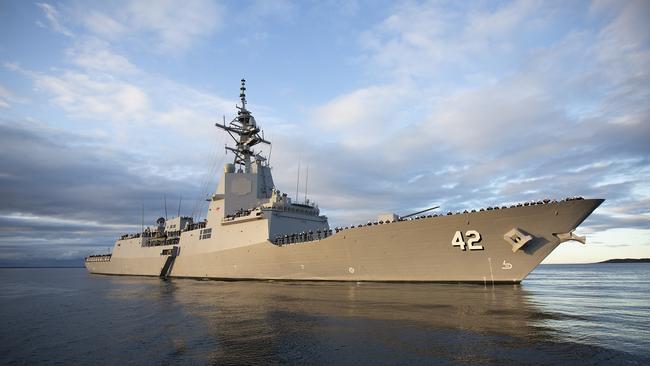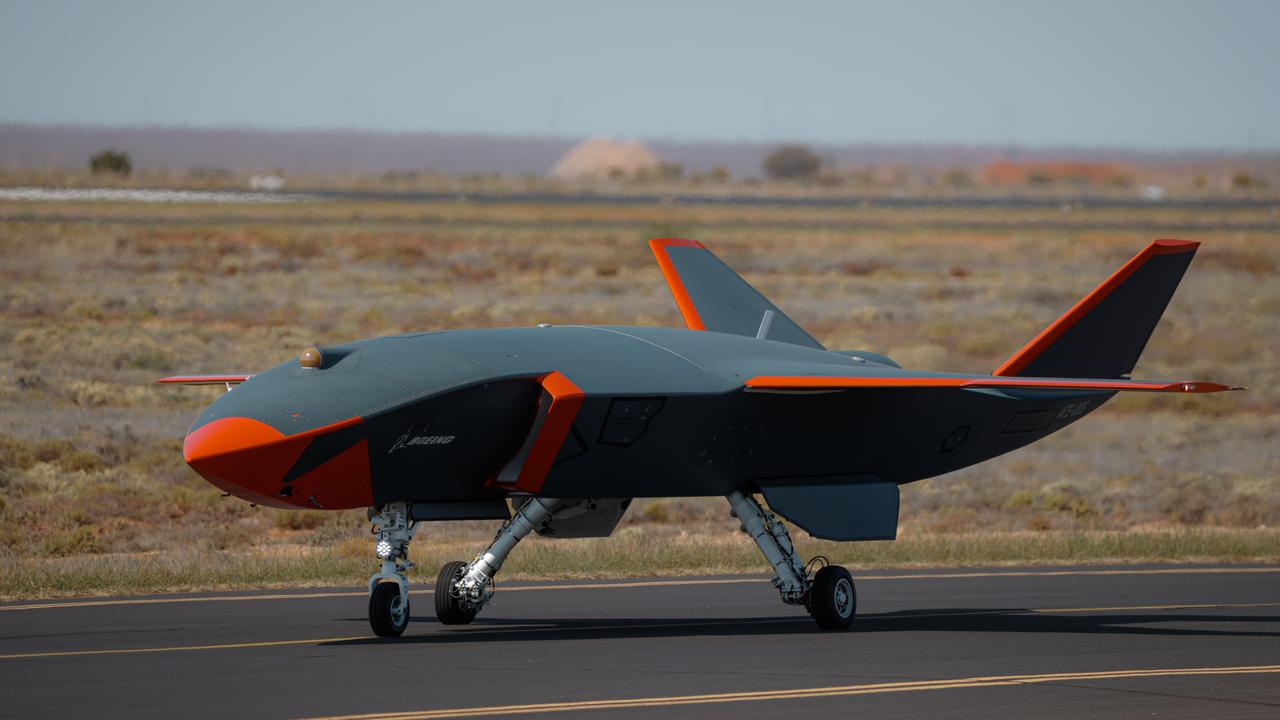Anti-ballistic missile capability plannedAegis upgrade
The Navy’s three Hobart-class destroyers are set to receive a key capability upgrade which, among other enhancements, will enable Australia’s first anti-ballistic missile capability.

The Navy’s three Hobart-class destroyers are set to receive a key capability upgrade which, among other enhancements, will enable Australia’s first anti-ballistic missile capability.
The Hobart-class Guided Missile Destroyer (DDG) Combat Systems Modernisation program being delivered under Project Sea 4000 Phase 6 will upgrade the ships’ Aegis combat system from the current Baseline 8 to the latest Baseline 9 (BL9) configuration.
In addition, the program will add an Australian Interface (AI) between the ship’s other sensors and the Aegis combat system, as well as new strike weapons such as the long-range Tomahawk cruise missile and the shorter-range Naval Strike Missile (NSM).
The Tomahawk is a land attack missile that meets the recent Defence Strategic Review (DSR) requirements for an enhanced long-range strike capability. The Kongsberg NSM is a modern strike weapon to replace Navy’s existing Harpoon missiles.
The Sea 4000 Phase 6 program achieved a major milestone in September when Navantia Australia announced it had delivered the functional design ahead of the first ship being inducted into BAE Systems Australia’s facility at Osborne in 2025.
Aegis Baseline 9 is a series of hardware and software changes that for the first time brings together anti-air warfare (AAW) and Ballistic Missile Defence (BMD) capabilities into the same combat system. Previously, the US Navy has operated its Aegis ships as either AAW or BMD “shooters”, but not both.
Most of the changes occur in the ship’s Combat Information Centre (CIC) and each ship will require 20 major modifications for the upgraded system, including new consoles, Electronic Warfare and communications upgrades, and improved cyber warfare capabilities.
The Australian Interface between Aegis and (primarily) the Hobart-class destroyer’s underwater warfare sensor suite is supplied by Saab Australia and based on the proven 9LV combat management system in widespread use aboard Navy’s surface combatants. In essence, 9LV and Aegis BL9 are two “brains” working together to provide the ship’s crew with enhanced situational awareness and combat effectiveness.
“We’re working collaboratively with Saab to interface the two brains – and the sensors and effectors (weapons) of those two brains … so that a sensor on the AI (9LV) side can pass a target track to Aegis and vice versa,” explains Lockheed Martin Australia’s Steve Froelich, vice president of operations Australia and NZ for the company’s Rotary and Mission Systems (RMS) division.
Lockheed Martin Australia is also partnered with BAE Systems Australia as the Combat System Integrators (CSI) for the upgrades. BAE Systems will shortly assume the role of Capability Life Cycle Manager (CLCM) for the three Hobart-class destroyers and will also leverage the work into its Hunter-class frigate program.
Looking to the future, Lockheed Martin has developed a “virtualised” version of Aegis which reduces its physical footprint from a number of metal cabinets to a form that fits into two large suitcases. The Virtualised Aegis Weapons System (VAWS) – or “Aegis in a box” – has already been deployed in the Indo-Pacific region during exercises and forms a key element of Lockheed Martin’s Joint Air Battle Management System (JABMS) for Australia’s Air 6500 program.
“Virtualising servers is a natural technology refresh cycle of any server-based sensor system,” Froelich says.
“Aegis is a service provided to the larger Command and Control (C2) system and the beauty of VAWS is, if you design a combat system to interface with a weapons control system and it just happens to be virtualised and fit into a smaller package, then that is very convenient for us.”
He says VAWS draws on Combat System Library (CSL) mission software to build full or scaled Aegis capability into a single box.
“The CSL allows for the core elements of Aegis to be included in the specific form-factor and for elements not required to be excluded,” he says.
“This means the right capabilities can be included in the form factor and reduce space, weight and power requirements.
“Think of it as a ‘classified cloud’ that provides or receives pertinent data at a given time.”
VAWS has obvious applications where space and weight margins are at a premium and Lockheed Martin is currently working with the US Navy to certify the system aboard ship.
Given the adverse publicity around the weight issues of the Hunter-class frigates, VAWS would seem an ideal solution for at least the later batches of ships – but that is not necessarily so, according to Defence. “As the Hunter-class frigate’s Aegis combat system – and for that matter the Hobart-class Aegis system – have been designed to remain in lock-step with the USN Aegis surface fleet, there is no intention to utilise VAWS at this time,” a Defence spokesperson says. “Notwithstanding, Defence will – in association with the USN – consider any future Aegis combat system updates that utilise the work being done with VAWS.


